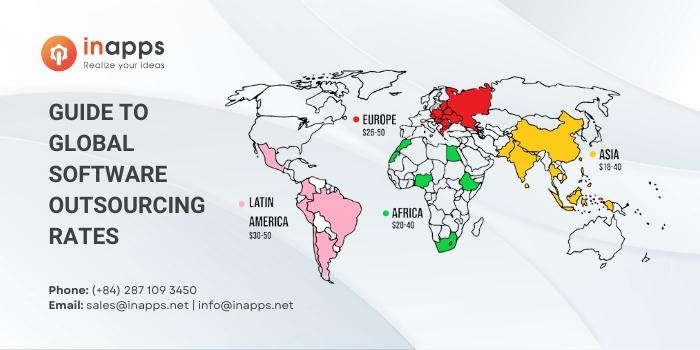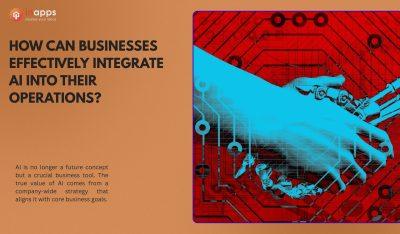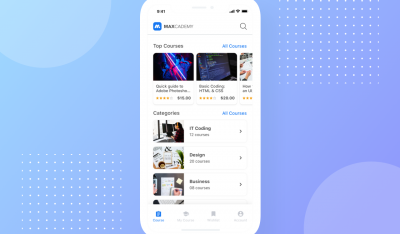- Home
- >
- Offshore News
- >
- What is the blended rate in software industry and how to calculate them?
In the fast-paced realm of the software industry, the “blended rate in software industry” emerges as a key pricing strategy. This model involves combining the costs of different skill levels within a team, offering a streamlined approach to project billing. In this article, we uncover the essentials of blended rates—defining the concept, exploring calculation methods, and highlighting its significance in software development economics.
Key Summary
- Overview: The article explains the concept of blended rate in the software industry, a pricing model used by development firms to streamline billing and provide cost transparency for clients.
- Key Points:
- Definition: Blended rate is a single, averaged hourly rate applied to a project, combining the rates of different team members (e.g., developers, designers, QA) regardless of their individual expertise or seniority.
- How It Works: Instead of charging separate rates for senior ($100/hour) and junior ($50/hour) developers, a blended rate (e.g., $75/hour) simplifies billing for the entire team.
- Common in Outsourcing: Widely used in offshore and nearshore development, especially in regions like Vietnam, to offer predictable costs.
- Calculation: Typically derived by averaging the rates of all team members based on their roles, hours, and project scope.
- Use Cases:
- Outsourcing software development for startups needing predictable budgets.
- Large enterprises managing complex projects with diverse teams.
- Agile projects where team composition changes frequently.
- Benefits:
- Simplifies budgeting and invoicing, reducing administrative overhead.
- Offers cost predictability for clients, avoiding surprises from varying rates.
- Encourages flexibility in team allocation without affecting billing.
- Challenges:
- May obscure individual contributor value, potentially undervaluing senior expertise.
- Less transparent for clients wanting detailed cost breakdowns.
- Requires accurate initial scoping to avoid misaligned expectations.
- Conclusion: The blended rate model in the software industry provides a streamlined, cost-effective pricing approach for clients, particularly in outsourcing, balancing simplicity and flexibility while requiring clear communication to align expectations.
Definition and Concept
A blended rate is the average cost calculated across team members with varying skill levels and pay rates who work together on software projects. Rather than charging different rates for each team member, the blended rate creates a single, unified hourly rate that represents the collective cost of the entire team’s services.
Calculation Method
The formula for calculating a blended rate is: Blended Rate = Sum of (Workload Percentage × Hourly Rate) for each team member.
For example, if a senior developer ($50/hour) contributes 60% of the workload and a junior developer ($30/hour) contributes 40%, the blended rate would be (0.60 × $50) + (0.40 × $30) = $42/hour.
Engagement Models
Software projects typically use one of three engagement structures:
- Dedicated Team (most preferred): Full-time team members integrated into your organization, paid monthly, building strong rapport and team identity.
- Staff Augmentation: Temporary, hourly-paid resources that supplement your existing team. Requires more oversight and effort to maintain engagement.
- Fixed Bid: Partner commits to completing a precisely defined project for a set price. Works well for smaller, clearly specified projects but is less suitable for agile development.
Cost Management Tips
- Provide clear project specifications and scope requirements.
- Maintain consistent communication with your provider.
- Establish cost caps to prevent budget overruns.
- Regularly evaluate and validate project scope.
Global Rate Considerations
Outsourcing rates vary significantly based on
- Geographic location (nearshore vs. offshore)
- Talent level and expertise
- Technology stack
- Commitment length
1. What is the blended rate in the software industry?
In the software industry, projects often require a team with diverse skills, including software developers, designers, project managers, quality assurance experts, and other roles. This team works collaboratively to deliver a software solution that meets the requirements and objectives of a particular project or client. This is where a blended rate in the software industry goes in.
The blended rate is like finding the average cost of a team’s skills. You have different people on the team, some with more experience, others with less. Instead of charging for each person separately, the blended rate is like putting all those costs together and finding the middle ground.
2. How to calculate the blended rate in software industry
Blended Rate = Total Workload Percentage / Total Weighted Cost
Let’s say you have a senior developer with an hourly rate of $50 contributing to 60% of the workload, and a junior developer with an hourly rate of $30 contributing to 40% of the workload.
Blended Rate=(0.60×$50)+(0.40×$30)/ (0.60+0.40) = 42
The cost of custom software development can vary dramatically and is determined by a variety of factors, including where you outsource, whether you have your in-house team and only need to outsource a portion of the project, or want to delegate the entire development process. Last but not least is the seniority level of the developers involved in your project.
When comparing one market or provider to another, buyers tend to compare a blended hourly rate of 6 – 8 person scrum team and assume full-time employment (FTE) of that team for 12 months or more. Naturally, actual rates will vary by skill level, technical specialty, and the engagement’s term and commitment.
Actual engagements can be structured one of three ways, ordered from most desirable to least.
Option 1: Dedicated Team
This is where the partner commits individuals to you full-time, and you pay for them per month. Developers are part of your team, will sit together, and will integrate with your development activities. You will build maximum rapport with your team, and, importantly, they will feel like they are part of something bigger.
Option 2: Staff Augmentation
Staff augmentation is a relationship in which you hire engineers to augment activities domestically and pay them hourly. This model can be valuable when you need resources temporarily. Still, you’ll need to carefully track and approve hours and work harder to keep the engineers engaged and on task, as they will not feel the connection to your team.
Option 3: Fixed Bid
It occurs when you deliver the partner a detailed project spec, and they commit to completing it for a fixed price. This setup can work with smaller and highly specified projects (e.g., developing a mobile app or MVP). However, it is not well suited to agile development processes since larger projects tend to be defined as they progress.
3. Tips to keep your blended costs balanced
When you’re choosing outsourcing partners, your service providers must bid on the project based on your specifications, project scope, workload, and degree of coverage (scope vs time). Your in-house project management team is in charge of determining the scope of activities and managing the project.
If you, as a client, fail to offer a clear explanation of your needs, be prepared to pay an additional fee at the time of delivery. As a result, it is critical that you constantly evaluate and validate the project scope and regulate it in terms of consistency, clear communication with your provider’s team, escalation methods, etc.
You can establish an upper limit or cap on costs to prevent uncontrolled cost escalation. Such constraints always aid in keeping your project within budget.
All in all, the blended rate pricing model allows service providers to mitigate the risk associated with higher rates for specialized skills by blending them with lower-cost resources. This ensures a more balanced cost structure.
3. Global Software Development Outsourcing Rates
Rates for software development outsourcing vary greatly depending on geography, talent level, expertise, the same technology stack used, and the necessary commitment length.
Our research looks at software outsourcing rates in a variety of partner regions. It will assist you in weighing the benefits and drawbacks of location – nearshore versus offshore – which is a significant driver of outsourcing rates:
- Nearshore partners share the same time zone (for a US company, including Canada and South America). This enables fluid engagement outside regular business hours and reduces travel time and jetlag for on-site meetings.
- Offshore teams in Asia, Europe, or Latin America often offer the most considerable cost reductions. Still, they may also present obstacles, such as cultural differences and the need to handle a more significant time zone difference.

2023 Global Software Outsourcing Rates. Source: Accelerance

Read more: Offshore Software Development Rates by Country Update latest 2023
4. The bottom line
The software business is a highly competitive industry that affects every area – it will only expand and diversify with each passing year. The blended rate model allows for flexibility in assigning resources with varying skill levels to different aspects of a project without affecting the overall cost significantly.
You can communicate with software outsourcing companies all over the world. Before you outsource, you must conduct the necessary research and background checks. When selecting a software outsourcing business for the engagement, it is critical to evaluate specialty, track record, recruiting procedures, communication skills, and other factors and cost-benefit.
I hope you find this article useful. It is written by InApps editorial team. About InApps,
InApps Technology – Leading Software Development Outsourcing Company in Vietnam
We, InApps Technology, a leading software outsourcing business in Vietnam, are the suitable software outsourcing partner that provides you with high quality and at a low cost. Our skilled and experienced teams can work on any software development project that you might need, as proven by their high customer retention rate. Feel free to explore the website to learn more about our offerings and technology solutions.
We’ll advise you on the best approaches to the development process as well as roughly estimate your software project concept cost. Let’s talk!
Let’s create the next big thing together!
Coming together is a beginning. Keeping together is progress. Working together is success.




















